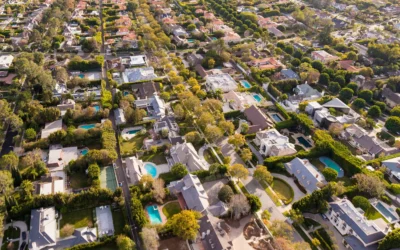Whether disgruntled over new high-density development or skyrocketing home prices, people in Utah are feeling the pinch of living in such an attractive place. Out-of-staters are flocking to Utah, and the generation entering adulthood doesn’t want to leave.
This conflict plays out most openly in the debate over housing and development in suburban cities along the Wasatch Front. City leaders and developers frequently push for high-density, mixed-use developments. Since high density does wonders for city tax revenue (and sometimes is the only type of project that will pencil out for developers), the economic logic makes sense. On the other hand, most local residents want to preserve the relaxed suburban or semi-rural atmosphere that prompted their choice of community in the first place. This sentiment, too, is reasonable.
This conflict plays out most openly in the debate over housing and development in suburban cities along the Wasatch Front. City leaders and developers frequently push for high-density, mixed-use developments. Since high density does wonders for city tax revenue (and sometimes is the only type of project that will pencil out for developers), the economic logic makes sense. On the other hand, most local residents want to preserve the relaxed suburban or semi-rural atmosphere that prompted their choice of community in the first place. This sentiment, too, is reasonable.
If we want to maintain the strong communities that make Utah a great place to live amid booming growth, consensus must be found — with each side getting some, but not all, of what they want. City council members and mayors will have to plan developments that better reflect the desires and interests of their constituents, and residents must understand that increasing density is inevitable and ultimately in the community’s best interest.
Millcreek offers a great example of responsive government. In April, the mayor called a townhall meeting to discuss future redevelopment in their city center. City leaders came not to convince the public of any grand redevelopment plan, but simply to listen. They started off by explaining that some level of density was going to be difficult to avoid, but before they received requests from developers or started changing zoning ordinances, they wanted to understand what citizens wanted and what it was about density that caused them such angst.
The crucial decision that Millcreek leaders made was to include residents as early as possible in the decision-making process. Applying this input may require that new development come with less housing, less density or less economic activity than what otherwise might be possible. But it will also translate to development that brings the community together rather than dividing people into winners and losers.
Transparent government, however, is only half the story. We all need to transition away from the “not in my backyard” mindset as we come to understand the dire need for housing. Since 2011, we’ve welcomed 162,288 new households, but have only built 111,455 homes, according to the Kem C. Gardner Policy Institute — a gap of more than 50,000. If current trends hold, they predict the average price of a home in 26 years will be $730,000 — well out of reach for first-time homebuyers and low-income households. There’s a real shortage, and the consequences of failing to increase supply are runaway home prices. The only solution is more housing, and in a geographically constrained area like the Wasatch Front, that means density. If locals dig in their heels and block necessary and reasonable development in their backyard, the result will be a community too expensive for their own children to grow up and settle down in.
As leaders and locals work together, we must also acknowledge that what is right in some cities won’t be right in others. Tall buildings and dense housing may be appropriate in Salt Lake City, where residents likely sought out an urban vibe and all its attendant amenities, but those living next to alfalfa fields in Farmington or American Fork are probably living there to escape the hustle and bustle of downtown. Cities will need creative ideas to add housing while retaining the atmosphere that has created the communities residents love. There are many options beyond plopping multi-story apartment complexes on old pastures.
Cities should focus on moving up at least one level of density. Large-lot suburbs can be zoned for smaller lots and townhomes; townhome and condo communities can be converted into taller apartment buildings, and so on. Focusing density around transit may also relieve pressure on peripheral communities. Density may not be the only issue at hand either. Developments should be designed in a way that complements the heritage of the existing community.
By seeking to represent their residents with an understanding that “doing nothing” isn’t an option, leaders will avoid many protests, angry city council meetings and community division. When people don’t feel listened to by those who represent them, they (predictably) become unhappy.
City leaders may not see the economic and housing utopias promised by maximum-pressure development. Residents may not get a neighborhood that remains unchanged by time. But both sides can get a lot of what they desire most and paint a future that keeps a growing Utah affordable and a great place to live.
More Insights
Read More
Conservatives’ Golden Opportunity to Win the Minimum-Wage Argument
Election year offers conservatives an opportunity to deliver a pro-worker message that can win over persuadables on the minimum-wage debate.
Protecting property rights against government overreach
While governments can continue to regulate land use, these regulations and fees must be justified by a government interest and proportional to the effect of the development’s impact on that interest.
Do we need to care about the Utah State Board of Education?
For any Utah voters who also feel like K-12 public education is headed in the wrong direction, learning about the candidates running for a seat on the Utah State Board of Education (USBE) is a wise choice this election season.



